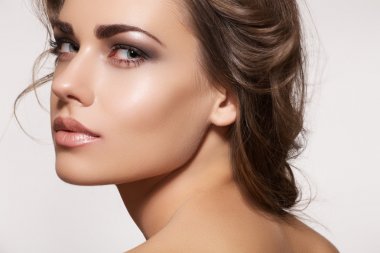The beauty industry in 2025 is undergoing a remarkable transformation. With consumers becoming more conscious, tech-savvy, and ingredient-aware, brands are racing to meet these evolving demands through innovation and intentionality. Skincare and cosmetics are no longer just about aesthetics—they’re about wellness, sustainability, and personalization. Whether you're a brand, retailer, or consumer, the following trends and movements are defining the future of beauty.
In particular, skincare is seeing a surge in demand for multi-functional products that do more than just hydrate or cleanse. For example, the Best Whitening Cream in Pakistan now often combines brightening ingredients with sun protection and anti-aging properties, giving consumers an all-in-one solution for a flawless complexion. These hybrid formulations exemplify how the industry is shifting toward simplified yet powerful routines.
Skincare Gets Smarter: AI, AR, and Personalized Solutions
Artificial Intelligence (AI) and Augmented Reality (AR) are no longer futuristic—they are now fundamental tools reshaping how beauty products are developed, marketed, and applied. In 2025, consumers can scan their face using a smartphone app, receive a full skin analysis, and instantly get matched with products tailored to their specific needs.
This personalized approach is also entering the formulation stage. Custom-blended serums, moisturizers, and even foundations are being created in real-time at retail counters or online, using AI-driven algorithms. Beauty is no longer one-size-fits-all, and brands that ignore this demand for individuality risk becoming obsolete.
Blue Beauty and Sustainable Formulations
Clean beauty has evolved into blue beauty—a movement focused on products that are not just safe for the skin but also for the oceans and planet. In 2025, packaging is shifting toward refillable, biodegradable, and zero-waste formats. Ingredients are being scrutinized not just for their efficacy, but for their environmental footprint.
Marine-safe sunscreens, waterless cleansers, and solid skincare bars are taking center stage. Brands are also investing in ethical sourcing, carbon neutrality, and eco-certifications. This isn’t just good PR—it’s now a non-negotiable for a new generation of eco-conscious consumers who value purpose over product.
The Rise of Biotech Beauty and Lab-Grown Ingredients
One of the most fascinating developments in the 2025 beauty forecast is the rapid rise of biotech beauty. Scientists are harnessing fermentation, plant cell cultures, and lab-grown alternatives to traditional ingredients. These lab-based actives are not only more sustainable but also more consistent in quality and performance.
Expect to see ingredients like lab-grown collagen, cruelty-free keratin, and plant-based retinoids dominating skincare labels. Biotechnology allows brands to reduce dependence on scarce natural resources and avoid ethical concerns associated with animal testing or deforestation. The result? Highly effective products that are future-ready and kinder to the planet.
Genderless, Inclusive, and Age-Positive Branding
Today’s beauty is about breaking barriers—especially those set by outdated beauty standards. In 2025, brands are embracing gender-neutral packaging, inclusive shade ranges, and age-positive messaging. The idea that beauty is for everyone—not just young women—has finally taken root in mainstream branding.
Men’s grooming, once a niche segment, is becoming more integrated into general beauty offerings. Meanwhile, consumers over 40 are finally being represented in marketing campaigns without being marketed anti-aging products in a patronizing way. This cultural shift reflects a deeper societal move toward diversity and representation, which consumers increasingly demand from the brands they support.
Wellness, Mental Health, and the Emotional Side of Beauty
The beauty routine of 2025 is not just about looking good—it's about feeling good, too. Skincare and makeup now overlap with mental wellness in ways never seen before. Fragrance-infused serums to boost mood, skincare with adaptogens to reduce stress, and makeup designed to mimic the effects of a good night’s sleep are now trending.
“Self-care” has evolved from a buzzword to a core pillar of beauty marketing. Brands are promoting mindfulness, rituals, and emotional connection as part of their product narratives. The idea is that beauty should enhance your overall well-being, not just your appearance—and consumers are responding to this holistic approach with enthusiasm.
The Redefined Luxury: Minimalism and Skinimalism
In contrast to the cluttered vanities of the past, 2025 is ushering in an era of “skinimalism”—a trend focused on using fewer, better products. Consumers are more educated than ever, demanding ingredient transparency, clinical proof, and multi-functional use.
Luxury in beauty is no longer defined by a hefty price tag or elaborate packaging. Instead, it's about efficacy, ethical values, and experience. A minimalist skincare routine with three to four powerful products is often seen as more desirable than a 10-step routine with questionable benefits. Brands are responding by offering curated collections and starter sets that align with this simplified yet effective approach.
Final Thoughts
The beauty landscape in 2025 is dynamic, inclusive, and technology-forward. The industry's future belongs to brands that understand the pulse of the modern consumer—who cares as much about sustainability and individuality as they do about glow and glamour.
With advancements in biotech, AI-powered personalization, and mental wellness-driven products, the future of beauty is more than just skin deep. It's ethical, emotional, and environmentally aware. Whether you're looking for smarter skincare or seeking products that align with your values, 2025 promises a beauty revolution that's more human—and humane—than ever before.

Comments on “2025 Beauty Forecast: Innovations and Movements Defining the Industry”